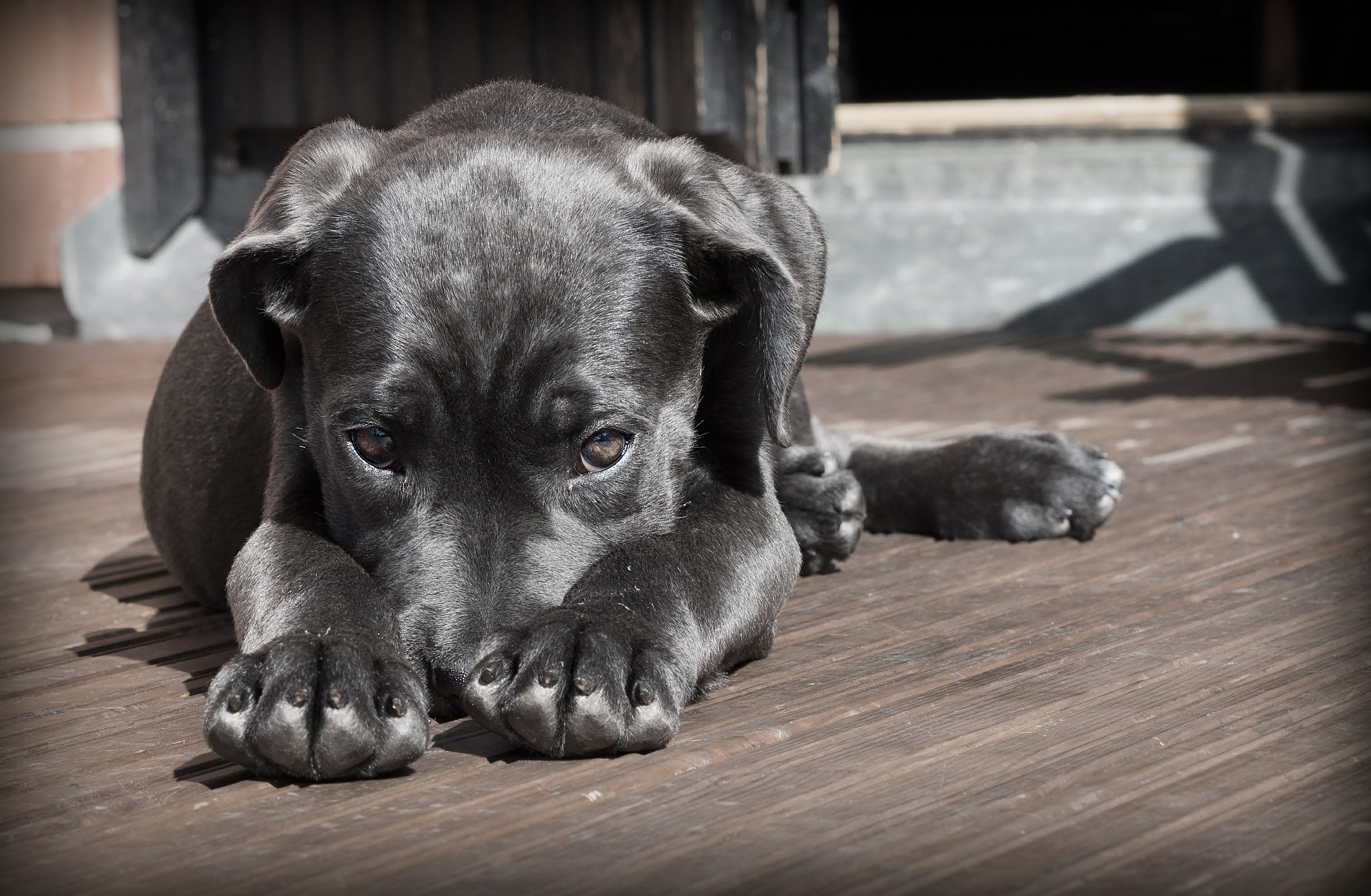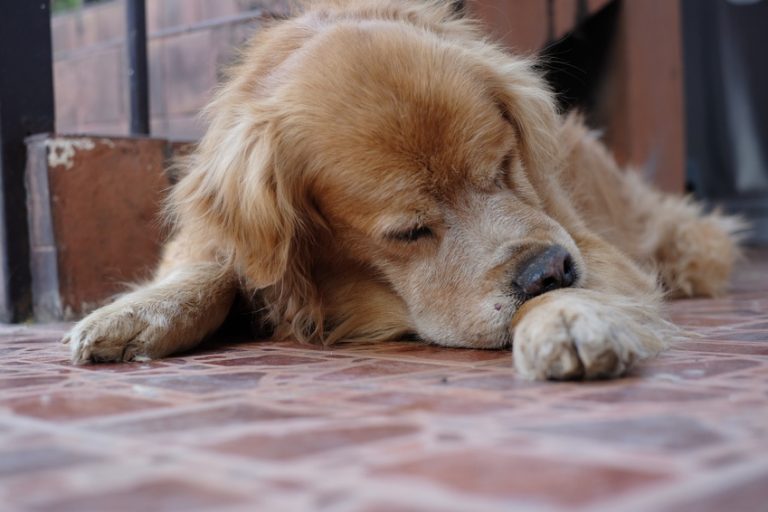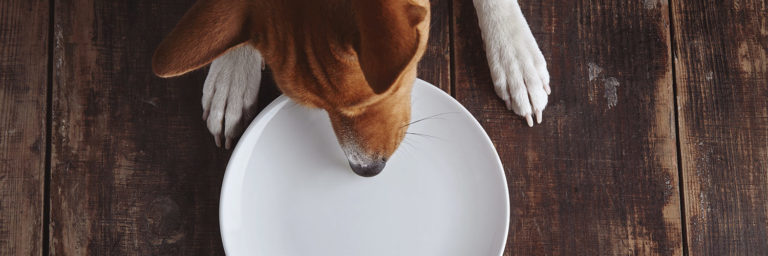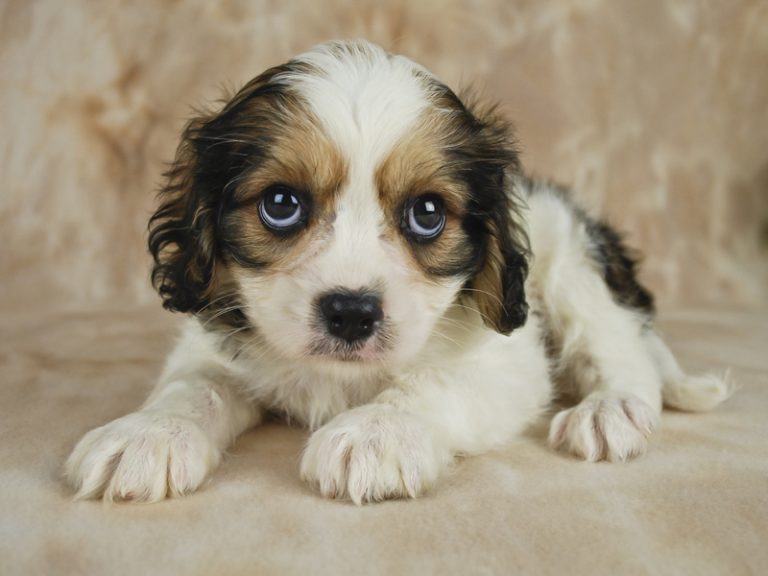Puppy Care Guide – Best Online Guide to Caring for your Puppy

Contents of Article
- Understanding the Puppy Growth Cycle
- Finding a Breeder and Picking a Puppy
- Introducing Your New Puppy
- Establishing Boundaries and Setting a Routine
- Early Socialization and Setting the Stage for Training
- Choosing the Right Toys for Your Puppy
- Exercising Your New Puppy
- Meeting Your Puppy’s Nutritional Needs
- Veterinary Care for Your New Puppy
- Tips for Surviving the Teenage Years
Adding a puppy to your family can be very exciting, but it can also be a lot of work. Many people underestimate the amount of time it takes to care for a puppy, not even factoring in things like obedience training. Before you commit to purchasing a puppy, take the time to think about what kind of commitment you are making – a puppy requires a commit of time as well as financial resources for a good ten to fifteen years. To help you learn what to expect as a new puppy owner, here is a comprehensive guide for new puppy care. This guide will cover the following topics:
- Understanding the Puppy Growth Cycle
- Finding a Breeder and Picking a Puppy
- Introducing Your New Puppy
- Establishing Boundaries and Setting a Routine
- Early Socialization and Setting the Stage for Training
- Choosing the Right Toys for Your Puppy
- Exercising Your Puppy
- Meeting Your Puppy’s Nutritional Needs
- Veterinary Care for Your New Puppy
- Tips for Surviving the Teenage Years
Do you know the 9 Best Puppy Foods?
Understanding the Puppy Growth Cycle
To give your puppy the best care possible, you need to understand the puppy growth cycle. Knowing what to expect as your puppy develops will help you to ensure that his needs are met. Here is an overview of the puppy growth cycle including tips for what to expect along the way:
Birth to Three Weeks: Puppies are born with their eyes closed and they are almost completely devoid of senses. Their noses and ears don’t start to fully work until they are about 3 weeks old, so they are entirely dependent on their mother at this point. Puppies spend most of their time sleeping during the first few weeks and they nurse roughly every two hours.
Three to Five Weeks: After the first three weeks, your puppy’s eyes open and he develops the ability to hear and smell as well. As his senses continue to develop, your puppy will become increasingly more aware of his surroundings and he’ll start to interact with his littermates as well as his mother. He’ll start experimenting with walking, barking, and wagging his tail – he’ll also start to learn how to play. Around the fourth week is when most breeders start to introduce solid food, though your puppy will still rely primarily on his mother’s milk for nutrition.
Five to Seven Weeks: By the time your puppy is five weeks old, his teeth will have started to come in and he may begin to wean as well. As long as your puppy has access to solid food he will start to try it. With each passing week, your puppy will become more active and more curious, starting to move a little further from his mother. This is the ideal time to start expanding your puppy’s surroundings, encouraging him to interact not only with his litter mates but with people as well. You shouldn’t separate your puppy from his littermates or his mother yet, but you should spend time with him so he starts to develop an attachment to people as well as other puppies. At some point during this stage you’ll also want to take your puppy to the vet to get started with his vaccinations.
Eight to Nine Weeks: This is the earliest stage at which you can consider separating your puppy (and his littermates) from their mother, but only if they are completely weaned. By this time, your puppy’s senses will be fully developed and he may undergo a bit of a regression – instead of becoming more curious, he may start to act more fearful or cautious. During this time, you need to be careful not to push your puppy too far – you don’t want to frighten him or traumatize him. Try not to schedule any surgeries or visits to the vet during this time but continue to handle your puppy, gently, so he doesn’t develop a fear of people.
Ten to Twelve Weeks: Most puppies recover from their regression by this time so it is the perfect time to start socialization. Socializing a puppy is all about exposing him to as many new things as possible. The experiences your puppy has while he is young will play a significant role in shaping him into a well-adjusted adult dog. Dogs that are not properly socialized during puppyhood tend to be more cautious and fearful of new people and unfamiliar situations later in life – that’s not what you want for your puppy. In addition to recovering from his regression, your puppy’s brain will by now have developed to the point that he is able start learning his name. You may also be able to introduce simple commands and implement leash training, but don’t set your expectations too high at this point.
Thirteen to Sixteen Weeks: By now your puppy should begin teething so anything and everything is likely to become a chew toy. Your puppy will also start to become more independent and willful – you might have trouble keeping him focused during training sessions and he may start to ignore commands that he used to respond to. Just keep working with him and be consistent with your training and continue to enforce house rules so your puppy doesn’t develop any bad habits that might be difficult to break later on.
Seventeen to Twenty-Four Weeks: Over the next few weeks your puppy’s teeth will continue to grow in and he’ll start to find his place as a member of the family. Keep working with your puppy to socialize him to as many new things and possible – you can also get a little more serious about housetraining during this time. Just keep in mind that your puppy can only control his bladder and bowels for about one hour per month of age. By the time he reaches twenty-four weeks (6 months) he might be able to hold his bladder overnight, but don’t push your luck.
Twenty-Four to Forty-Eight Weeks: Between six and twelve months of age is when you’ll really start to buckle down with obedience training. It is usually best to have one member of the family do the training until your puppy gets the hang of it. Then, make sure that everyone uses the same commands and that you are consistent about enforcing house rules and rewarding positive behaviors. You’ll also need to start thinking about having your puppy spayed or neutered around six months of age and, by now, your puppy should have most of his initial vaccinations. You can continue to socialize your puppy as well, but wait to make his first trip to the dog park until he’s at least 12 months, has been altered, and is completely up to date on vaccinations.
Once your puppy hits twelve months of age, he is technically no longer a puppy. Keep in mind, however, that just because your puppy may now be considered an adult, that doesn’t mean his puppy behavior is suddenly going to stop. Large- and giant-breed dogs can take two years or more to fully develop, both physically and mentally, so be prepared for that.
Finding a Breeder and Picking a Puppy
Before you start shopping around for a puppy you need to think about whether you can handle the commitment of a new puppy. Becoming a dog owner is not a decision that should be taken lightly. Though lifespan varies from one breed to another, a puppy could be a ten to fifteen-year commitment. During that time, you’ll need to be available to train your puppy, to take him for daily walks, to feed him, to take him to the vet, and to be his loyal friend and companion. Unless you can do all of that consistently, a puppy may not be the right pet for you.
If you are certain that you can commit to being a good dog owner, you also need to think about the kind of puppy you want. There are hundreds of different dog breeds out there, so don’t take this decision lightly, either. As you start thinking about what kind of dog you might want, here are some questions you should ask yourself:
- How much space do you have to accommodate a dog in your home?
- Do you have consistent and convenient access to outdoor space?
- Is there somewhere you can walk your dog on a daily basis?
- How much time are you willing to spend grooming your dog?
- Are you looking for a running partner or a couch potato?
- Do you want a dog who will follow you everywhere or one who is more independent?
- Have you owned a dog before or are you a complete novice?
- How much time can you devote to socializing and training a dog?
- What kind of budget do you have to purchase your puppy and the things he needs?
- Are you prepared to accommodate special dietary restrictions?
- Do you want a dog that makes friends with everyone or one who will guard your property?
- Are you looking for a dog that gets along well with children?
- Do you have other household pets that your dog needs to get along with?
Answering the questions above will help you to get a better idea of what you are looking for in a dog. Keeping those answers in mind, you can start to do some independent research to find a dog that fits with your lifestyle and suits your preferences. You can also find quizzes online that can help to match you with the perfect dog breed.
Once you’ve decided on a dog breed, your next step is to find a responsible dog breeder. You may think that finding a puppy is as simple as going to your local pet store, but I would seriously caution you against that choice. What you may not know is that many pet stores get their puppies from puppy mills. A puppy mill is a commercial breeding facility that only cares about profit – they keep their dogs in horrible conditions, forcing them to breed again and again until they are no longer physically capable of doing so. A puppy mill does not screen their breeding stock like a responsible breeder would, so the puppies have a high risk for inheriting genetic health problems.
There are a number of different ways you can go about finding a responsible dog breeder. You can, of course, perform an Internet search but you might want to look for local options first. Ask around at your local shelter or vet clinic, and talk to dog owners you may know to see if they have any connections. Once you’ve accumulated a list of several breeders you’ll want to vet them thoroughly to choose the right one. Don’t rush this process or you might end up with a poorly bred puppy predisposed to health problems that could shorten his lifespan.
Once you’ve chosen a responsible breeder, you should visit the facility and actually pick out your puppy. Don’t fall for online advertisements – many puppy mills sell puppies online as well as in stores, and you can’t be sure that you are getting the same puppy you see in the picture. You’ll want to check out the breeding facility first to make sure that it is a reputable establishment and then meet all of the puppies the breeder has available so you can choose the one that is right for you. The only way you will know if you get along with a puppy is to spend some time with him.
Introducing Your New Puppy
After you’ve gone through the lengthy process of vetting a breeder and picking out your puppy, you may feel as though the hard work is done. If I’m being honest with you, however, I’ll have to say that you are just getting started. In most cases, you’ll visit a breeder and pick out your puppy before he is actually ready to come home. A responsible breeder won’t send a puppy home until he is at least eight weeks old and fully weaned. Some breeders keep their puppies a little longer to get them started with socialization and training, so make sure you ask the breeder about his timeline so you know how much time you have to prepare yourself and your home.
One of the most important things you need to do before you bring your puppy home is called puppy-proofing. You’ve probably heard of child-proofing – puppy-proofing is essentially the same thing. You’ll need to go around your house and make sure that it is a safe environment for your puppy. That might mean putting child locks on your cabinets to safely store cleaning products and you’ll have to stop leaving open containers of food on the counter. Your trash will need to be put away and you can’t leave anything on the floor unless you want it to become a chew toy for puppy. You’ll also need to take a walk around your property to make sure that your backyard is safe for your puppy as well.
In addition to making your entire home safe for a puppy, you should also take the time to set up a special area for your puppy to call his own. You’re probably planning on getting a crate for your puppy to use during housetraining, but I would recommend setting up a larger area (maybe even a small room) for your puppy. You can’t physically keep your eye on your puppy at all times, and sometimes you won’t want to put him in his crate. For those times, you’ll be glad to have a special area where your puppy will be contained but not confined. I recommend a puppy playpen for this purpose – you can use it to cordon off an area in a spare room and set up your puppy’s crate as well as his food and water bowls, a comfy bed, and his toys so they are all there for him.
Even when your home is good and ready, there is still one more thing you need to do before you actually bring your puppy home – you need to prepare your children. Getting a new puppy can be an exciting time for children and they won’t be likely to pay you any attention once the puppy is actually in front of them. So, you need to take them aside and have a conversation before you bring the puppy home to make sure that they understand a few things. For one thing, you’ll need to talk to them about the proper way to handle the puppy – puppies are fragile and they could be hurt by rough treatment, even if it is accidental.
You also need to make sure that your children understand the responsibility involved in caring for a puppy. Decide ahead of time just how much of a role your children will take in your puppy’s day-to-day care and make sure they understand their commitment. Even if you make a deal with your children that they will take care of the puppy, you should still be prepared to shoulder most of the burden yourself. In many ways, making sure that your kids do their part to care for the dog is just as time-consuming as taking care of the dog yourself. But having a puppy is a good lesson in responsibility, as long as your kids understand what is expected of them.
Establishing Boundaries and Setting a Routine
All of the planning in the world can never completely prepare you for the whirlwind that is a new puppy. As much as you might think that you’re ready for the challenge, the first time your puppy chews up your favorite pair of shoes or has an accident on the rug, you will think differently. All of this is to say that puppies are unpredictable – you never really know what they are going to do next. And the truth is that you can’t really hope to control your puppy. The best you can do during the first couple weeks you have your puppy is to establish a routine and to start enforcing house rules. The hard work of obedience training is still a few weeks (or months) away, but it is never too early to start cultivating good habits.
Dogs thrive on routine and having a daily routine for puppy care is going to be helpful for you as well. Puppies need to eat a lot in order to fuel their rapid growth and development, so plan to feed your puppy at least three times a day. You can time your puppy’s meals to work with your own daily schedule, but be prepared to make a few adjustments. The first thing you need to do when you wake up is to take your puppy outside to do his business. You’ll need to do it again about thirty minutes after his first meal as well. In fact, you can expect that your puppy will need to go about 20 to 30 minutes after each meal and immediately after waking up from a nap.
In addition to scheduling your puppy’s meal times, you should also get into a habit for play time and exercise. Happiness is a tired puppy, so every time you have a few spare minutes throughout your day, engage your puppy in a quick game or an impromptu training session. If you work a full-time job, you might need to start waking up a little earlier so you can take your puppy for a walk before you leave. Talking your puppy for another walk or giving him some play time before bed will be important as well – especially if you want him to sleep through the night.
As I already mentioned, it may still be too early to start teaching your puppy the basics of obedience training, but it is never too soon to start enforcing house rules. This is as much about rewarding positive behavior as preventing negative behavior. For example, unless you want your puppy to get into the habit of sleeping in bed with you every night, don’t do it when you first bring him home. Similarly, don’t reward your puppy with excitement and praise when he jumps onto your lap unless you want him to think that it’s still okay for him to do it a few months down the road when he’s fifty pounds heavier. You want to reward him for the things you want him to keep doing.
Early Socialization and Setting the Stage for Training
Though your new puppy may still be too young to start learning commands, it is important that you get started with socialization as soon as you get him home. Don’t worry – it’s not difficult. In fact, socialization is really as simple as just making sure that your puppy has as many new experiences as possible. The goal is for your puppy to learn to approach the world with a positive attitude, not a negative one. The more new experiences your puppy has while he is young, and the more positive those experiences are, the more he will greet new things as an adult with optimism rather than fear. The last thing you want is for your dog to quake with fear every time someone new comes to the house or each time you have to put him in the car.
Again, socialization is very simple. During your puppy’s first few weeks at home you’ll want to expose him to everything from different kitchen appliances to different kinds of people. Invite your friends over so your puppy meets tall people, short people, people with long hair, people with dark skin, people who wear glasses, and everything in between. You should be careful about introducing your puppy to other dogs until he has his vaccinations, but you can still take him out of the house to new locations and he can meet other kinds of pets as well. Just be sure not to overwhelm your puppy with too much at once – one or two new things each day is an excellent goal. If at any point your puppy seems to be frightened, take a step back and give him some reassurance.
In addition to socializing your puppy, you’ll also want to start setting the stage for later training – this includes housetraining as well as obedience training. When your puppy is young, he can realistically only be expected to hold his bladder and bowels for about one hour per month of age. This means that if you don’t want your puppy to constantly be going on the rug, you’ll need to take him outside pretty frequently. Each time you take your puppy outside, take him to the same spot in the yard so he learns what you expect from him when you take him there. When he does his business in this area, praise him excitedly and give him a treat. Your puppy has a natural desire to please you (and he loves treats), so if he learns that a specific behavior makes you happy, he’ll be eager to repeat it. You can also try giving your puppy a verbal command like “Go pee” when you take him outside. Eventually he’ll get to the point where you can just open the door and give him the command, then he’ll go straight to his designated potty spot to do his business.
While your puppy may still be too young to learn commands, you can certainly start teaching him to respond to his name. Grab a handful of treats and take your puppy out into the yard. Let him wander around but every few minutes, say his name and clap your hands – when your puppy looks at you, praise him excitedly and give him a treat. The goal is to encourage your puppy to give you his attention when you say his name – you also want him to WANT to respond to you. This exercise paired with plenty of play time will also help you to start building a bond with your puppy. That bond will come into play later when you are ready to start obedience training. If your puppy has learned that good things happen when he listens to you, he’ll be more likely to pay attention during training time.
Choosing the Right Toys for Your Puppy
Puppies have endless curiosity and, because they don’t have hands, they explore things using their mouths. This is fine when it comes to sampling new foods, but it can be a problem if your puppy starts to “explore” your favorite pair of shoes. To help keep your puppy from chewing on things he shouldn’t, you should provide him with a variety of different toys. There are many different types of dog toys out there, and each type serves a unique purpose. Here is a quick overview:
Balls – Every dog loves a good ball, especially if you throw it for him. Dog toy balls come in all different sizes and materials ranging from hard rubber balls to foam balls and tennis balls. Though some dogs chew on balls, they are primarily used for playtime.
Tug Toys – Puppies love to play tug-of-war so having a nice tug toy is a must. Most tug toys are made from rope or fabric and you can choose one that is a size your puppy can handle.
Rawhide – Rawhide is a great option if you want to give your puppy to chew on besides your shoes. Be aware, however, that rawhide can pose a choking hazard if your puppy chews it into tiny pieces. Some rawhide is also made with artificial preservatives, so look for natural alternatives.
Rubber Toys – These toys are the ultimate chew toy because your puppy won’t be able to chew it to bits. There are many rubber toys that can be filled with treats and used as a distraction toy to keep your puppy busy when you can’t keep an eye on him. Rubber toys can also be good for your puppy’s teeth and gums.
Plush Toys – Stuffed toys make great comfort toys for puppies, though some puppies will chew them up like any other toy. Be sure to choose a plush toy that is an appropriate size for your puppy and avoid toys that have any plastic or metal parts that might come off.
Puzzle Toys – These toys are more like games than toys and you can use them to play with your puppy or he can play on his own. This type of toy is great for giving your puppy a little bit of mental stimulation to keep his mind sharp.
Every puppy has his own unique preferences when it comes to toys and you won’t know what your puppy likes until he decides for himself. It is a good idea to get an assortment of toys for your puppy and then see which ones he prefers. Then, when those toys wear out or break you can replace them.
Exercising Your New Puppy
Your puppy is full of energy and he is always ready to play. But playtime isn’t enough to meet your puppy’s needs for exercise – you also need to take him for a daily walk. That daily walk is important to help your puppy burn off some energy and it can be a great opportunity for the two of you to bond as well. Just be mindful that you don’t exercise your puppy too much because excess strain on his bones and joints could put him at risk for musculoskeletal problems as an adult. A good rule of thumb to follow is 5 minutes of exercise per month of age up to twice per day. So, if your puppy is 4 months old, you can take him for a twenty-minute walk up to twice a day.
In addition to being careful about how much you exercise your puppy, you also have to think about where you are going to exercise him. Before your puppy has all of his shots, it’s not a good idea to take him to the dog park or to any other area where he might be exposed to other dogs. As long as you have a leash, however, any outdoor area can be turned into a place to walk your puppy. Just keep an eye on him so he doesn’t get into trouble and watch for signs that he is tiring out. You should be extra careful in hot weather to make sure your puppy doesn’t overheat.
Though playtime shouldn’t be used as a replacement for exercise, it can help to work off a little extra energy and it’s a great time to spend bonding with your puppy. You can also use playtime as an opportunity to start setting the stage for training. For example, to help your puppy form a positive association with his crate (in preparation for crate training) you can play a game where you toss toys and treats into the crate for him to fetch. You can also make a game out of saying your puppy’s name and giving him a treat when he looks at you. Playtime should be fun but that doesn’t mean that it can’t also be a time for learning.
Meeting Your Puppy’s Nutritional Needs
Many people assume that dogs are carnivores, but that is not strictly true. In the wild, dogs eat a diet that consists primarily of meat, but they have been known to eat plant foods when meat is not available. Even so, a dog’s body is better adapted to digesting and absorbing nutrients from animal products. This being the case, the majority of your puppy’s diet needs to come from animal products like poultry, meat, fish, and eggs. Protein is essential to fuel your puppy’s growth and development while fat provides him with extra energy. Carbohydrates do contain some essential nutrients, as well as dietary fiber, but your puppy doesn’t need a lot of carbohydrate in his diet.
Choosing a puppy food that provides for these nutrition needs can be a little tricky, but it is by no means an impossible task. Your best bet is to start with a high-quality brand and to choose a product that is specially formulated to meet the nutritional needs of growing puppies. Puppy food tends to be higher in protein and fat than adult dog food since puppies burn energy very quickly as they grow. You want to be careful, however, to make sure that your puppy doesn’t grow too fast – this is particularly important for large-breed puppies. If your puppy grows too quickly it could put strain on his developing bones and joints, increasing his risk for musculoskeletal issues later in life.
In addition to choosing a high-quality puppy food you also need to be mindful of how much you are feeding your puppy. While you might be able to simply leave a bowl full of food out for your puppy to eat from as he likes, some puppies don’t do well regulating themselves when it comes to food. If you choose to ration your puppy’s food, you should still feed him at least three small meals per day to keep his metabolism up. Follow the feeding recommendations on the package to determine how much to feed your puppy at each meal and keep an eye on his growth to make sure that he is growing and developing properly, but not growing too fast.
Once your puppy reaches about 80% of his adult size, you should think about switching him over to an adult formula. The best thing to do is to find an adult dog food recipe made by the same brand as your puppy food – this will help to make the transition easier for your puppy. If you have a small-breed dog, choose a small-breed formula – if you have a large-breed dog, choose a large-breed formula. When it comes time to make the switch, mix about 75% of your puppy’s current food with 25% of the new food for a day or two. Then, make it a 50/50 mix for a day or two. As long as your puppy is tolerating the new food well you can move up to 75%/25% and then finally 100% of the new food. If at any point your puppy develops diarrhea or other gastrointestinal issues, go back to the previous stage for another day or two until he recovers.
Veterinary Care for Your New Puppy
As careful as you might be with your puppy, you can’t completely protect him from ever getting sick. When your puppy is born, his immune system is very weak but he receives antibodies from his mother through her milk. These antibodies help to protect your puppy until his own immune system develops. Once your puppy reaches about six weeks of age, he’ll need to start getting regular vaccinations to protect him against common canine diseases. There are some vaccines that your puppy will only need once, but most of them require two or three doses to establish initial immunity. After that, your puppy will only need a booster every one to three years.
By the time your puppy is ready to come home from the breeder he will probably already have some veterinary care and maybe a few vaccinations under his belt. Even so, it is important that you take your puppy to the vet within a few days of bringing him home. You’ll want to choose a vet that will see your puppy throughout his life so he actually gets to know your puppy – this will make it easier for him to diagnose health problems in the future, should they arise. Your vet will also be able to tell you exactly which vaccines your puppy is going to need and when he will need them. You should be prepared to take your puppy to the vet for shots every few weeks during his first year. After that, you can back off to two checkups per year for routine exams and tests.
Though vaccines will help to protect your puppy against some of the most common canine diseases, there are other things out there that could make your puppy sick. The more time you spend with your puppy the more you’ll get to know his personality and his normal behavior. In many cases, behavioral changes are the first sign of illness. Dogs have a natural instinct to hide their pain, so it may not be obvious to you that your puppy is sick – you may only receive subtle clues like loss of appetite, reduced tolerance for exercise, or low energy levels. At the first sign of trouble, take your puppy to the vet to get checked out. The earlier you catch a health problem the easier it will be to treat.
In addition to making sure that your puppy gets adequate veterinary care, you also want to protect him from certain parasites like heartworm, fleas, and ticks. A topical flea and tick preventive is usually the most effective option for fleas and ticks – these products can be applied monthly and they usually kill fleas and ticks in all life stages. Heartworm is another matter. This parasite can be spread by mosquito and it usually doesn’t present with symptoms until about 6 months after infection. You should start your puppy with a monthly heartworm preventive as soon as your veterinarian recommends it and keep up with it on a monthly basis. You may also want to talk to your vet about deworming your puppy because many puppies contract intestinal parasites from their mothers before they are even born.
Tips for Surviving the Teenage Years
Once your puppy hits twelve months of age, he’ll technically no longer be considered a puppy. Puppies don’t just magically go from puppyhood to adult, however – there is often a transitional phase similar to the teenage years in humans. The length of time it takes for your puppy to completely mature will vary according to his breed and size. As is true for humans, puppies may reach sexual maturity before they reach emotional or physical maturity. A puppy can become sexually mature as early as 6 months or, in larger breeds, as late as 18 months.
For small-breed dogs under 30 pounds, physical maturity happens around 10 to 12 months. In medium-sized breeds (up to 60 pounds), it may take 12 to 16 months. Larger breeds may keep growing until they are 2 years or older. The same scale can often be applied to emotional maturity, though most dogs seem to graduate from the adolescent or teenage phase between 12 and 18 months. It won’t happen overnight, either – your puppy’s temperament and personality will gradually start to even out and, as long as you keep up with obedience training, his unpredictable puppy behaviors will become less and less frequent.
The teenage years for a puppy can be taxing on your mental and physical wellbeing but, in the end, it will all be worth it. Here are a few tips to help you through those teenage years:
- Be patient. When you feel like your puppy is tugging on your last nerve, take a deep breath – maybe two. There will be days when you feel like nothing is going right, but just remember that there’s a light at the end of the tunnel.
- Be consistent with training. Training your dog is a lifelong endeavor – he may master the basic commands early on, but you’ll need to keep reinforcing them throughout his life. Practice your puppy’s commands in different environments and keep your training sessions short and sweet so your puppy doesn’t get bored and stop paying attention.
- Be generous with exercise. Nothing is better than a tired puppy – especially when the alternative is a puppy who is bouncing off the walls, chewing on everything in sight. Exercise is your best friend as the owner of a new puppy so find a few extra minutes for playtime or go for an extra walk if you have the time.
- Be playful with your puppy. Playtime isn’t just a great way to tire your puppy out – it is also a great opportunity to exercise your puppy’s brain. Make sure your puppy has a large variety of different toys to play with and be sure to include some interactive and puzzle toys to switch things up.
- Be careful about your puppy’s diet. Puppies grow up fast and they need a high-quality diet to provide the nutrients to sustain rapid growth. Spending a few extra dollars on a high-quality puppy food is worth the investment, not only for your puppy’s immediate health but for his long-term wellness as well.
- Be positive. As frustrating as your puppy will sometimes be, it is important to remember that you love him and to make sure that your puppy knows it! The time you spend with your puppy while he is still young is going to have a major impact on how he turns out as an adult. While different breeds do have different temperaments, you can influence your puppy’s personality to a certain degree by taking the time to form a close bond while he is still young.
While you may think of yourself as your puppy’s loyal friend and companion, it’s important to remember that you’re also his primary caregiver. If you treat your puppy right he’ll grow up to love, trust, and respect you, and that’s all you can really ask for as a dog owner.






